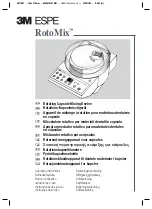
— 2-28 —
B
B
3
3
t
t
y
y
p
p
e
e
B
B
5
5
型
型
2
2
3
3
t
t
y
y
p
p
e
e
2
2
5
5
t
t
y
y
p
p
e
e
2.9. Control Input / Output Interface Specifications
2.9.2. Control I/O Signal Specifications of B3 and 23 Type Driver Units
2.9.2. Control I/O Signal Specifications of B3 and 23 Type Driver Units
l
B3 and 23 type Driver Units do not have the connector CN5.
l
Follow the respective specification documents in case of a custom made Megatorque Motor
System and whose specifications of Input / Output signal are unique.
2.9.2.1. Selection of I/O Signal Combination Types
l
You may select function of a part of Input/Output Signals of the connector CN2 of B3 and 23
type Driver Units.
l
Refer to “3.4.3.1. Selection of I/O Combination Type” for selecting I/O combination type.
1 Input port
l
A combination type of CN2 I/O signals shall be specified from among Type 1 to 4, 7 and 8
combination types in accordance with required functions.
l
For the Megatorque Motor System, the shipping set is Type 1.
l
The parameter TY sets a combination type of I/O signal function.
l
The parameter TY requires entry of the password before its input.
l
Input of the parameter TY clears all polarity of the input ports to the normally closed contact. (A
contact)
2 Output Port
l
A function among Brake, Velocity threshold, Target proximity/In target, and Warning
shall be set to the output OUT1 (pin #3).
l
The shipping set is “Brake” output.
l
The parameter OM selects an I/O type.
l
The password is required prior to input the parameter OM.
2.9.2.2. Polarity of Input Port (Normally Open and Normally Closed Contact)
l
You can change polarity of some of the CN2 input signals.
l
The shipping set is set to the normally open contact for all input ports.
l
The parameter AB sets the polarity of the input ports.
l
The password is required before inputting the parameter AB.
l
The signals of which polarity you can change are limited to EMST, HLS, OTP, and OTM.
(For B3 and 23 type Driver Units, polarity change of OTP and OTM signals are only available in
3, 4, and 7 types.)
l
Refer to “3.4.3.2. Setting of Input Port Polarity” polarity setting.
















































